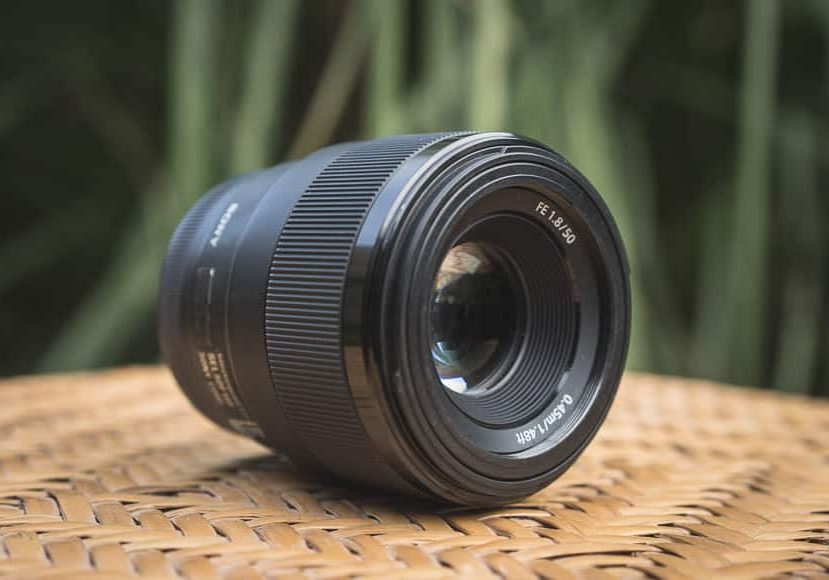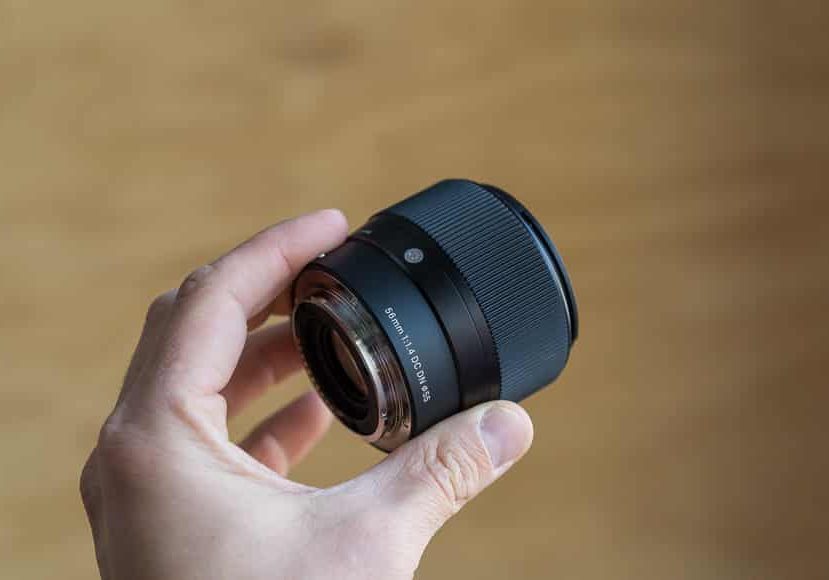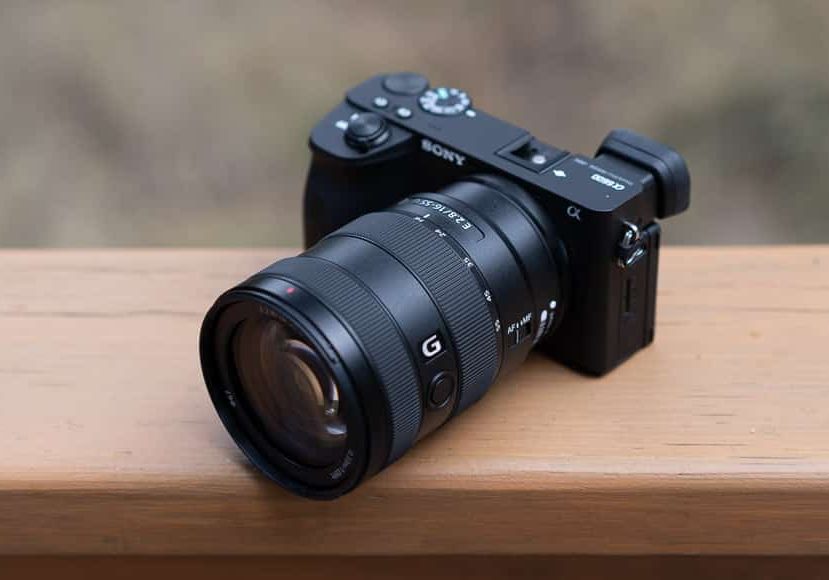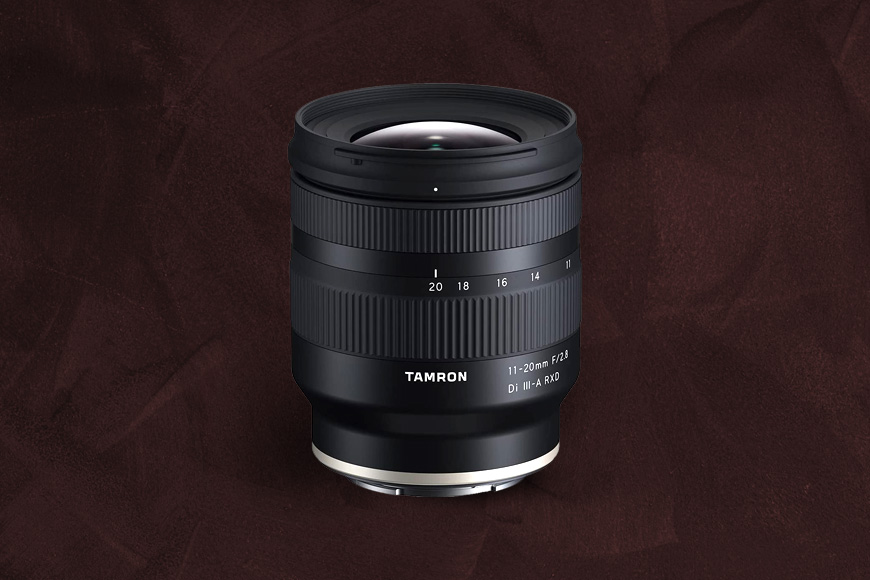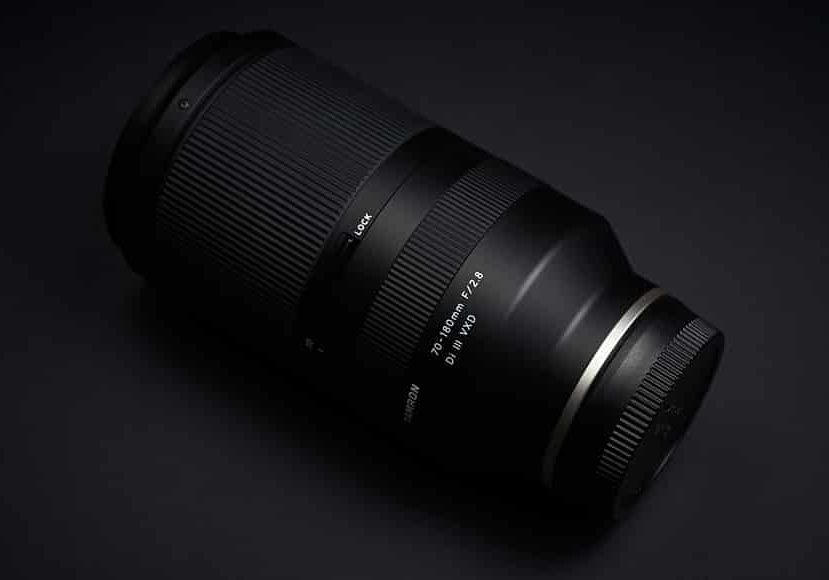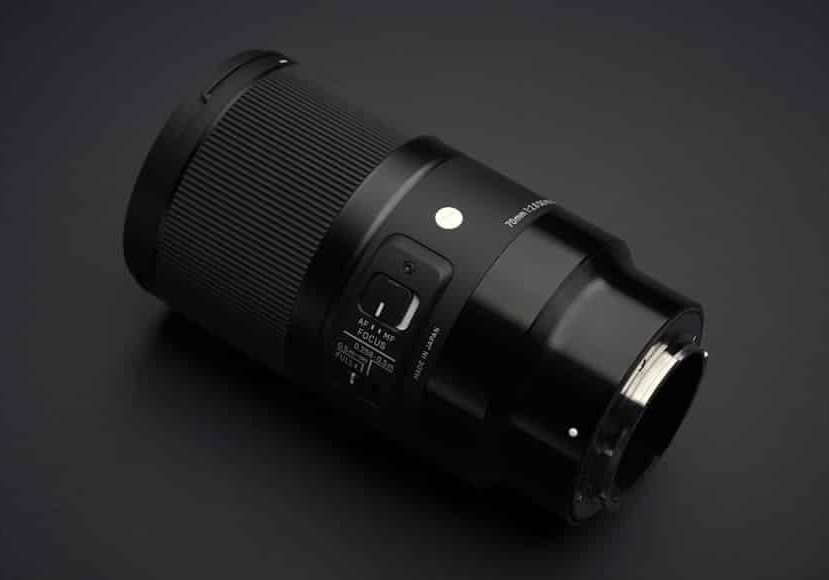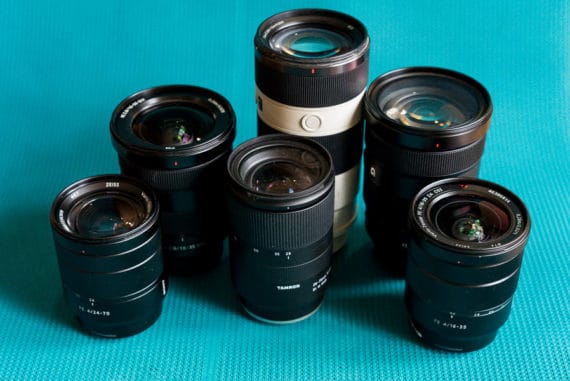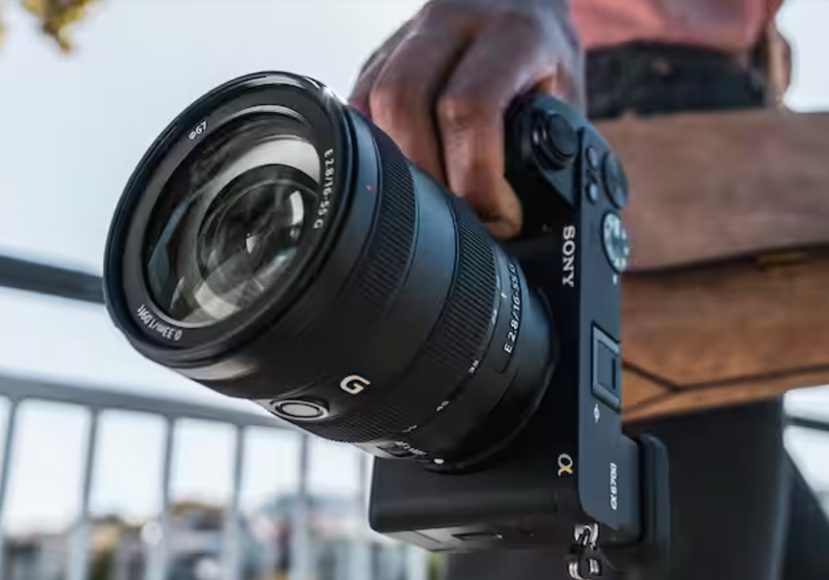
Best Lenses for the Sony a6700 in 2024
Explore the top lenses for the Sony a6700, featuring a range of options for every photography style and budget, from wide-angle to telephoto and macro.
Shotkit may earn a commission on affiliate links. Learn more.
This guide to the best Sony a6700 lenses will help you take better photos with the camera you already use.
Shooting thousands of photos has taught me that investing in better lenses is the easiest way to improve image quality.

Versatile and sharp, with an extensive zoom range, consistent aperture, and excellent image stabilization.
As a Sony a6700 owner, you already have a great tool to capture images and video.
However, unless you attach the right lenses to your Sony a6700, you’re not doing it justice.
All the Sony a6700 lenses below are perfect for specific situations and types of photography.
If you only have the budget for one lens, go for our Editor’s Choice above, which is ideal for everyday use.
Let’s take a closer look at the lens recommendations for your Sony a6700.
What are the Best Lenses for Sony a6700?
| Image | Product | Features | |
|---|---|---|---|
 | Sony FE 24-105mm f/4BEST ALL ROUND ZOOM LENS |
| Check Amazon Price → Check KEH Price → |
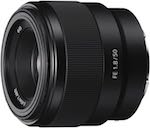 | Sony FE 50mm f/1.8BEST BUDGET PRIME LENS |
| Check Amazon Price → Check KEH Price → |
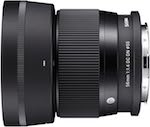 | Sigma Art 56mm f/1.4BEST PORTRAIT LENS |
| Check Amazon Price → Check KEH Price → |
 | Sony 16-55mm F2.8 GBEST STANDARD ZOOM LENS |
| Check Amazon Price → Check KEH Price → |
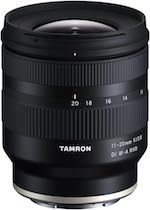 | Tamron 11-20mm F/2.8BEST WIDE-ANGLE LENS |
| Check Amazon Price → Check KEH Price → |
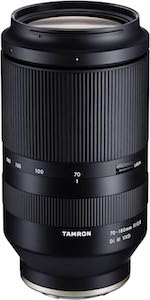 | Tamron 70-180mm f/2.8BEST TELEPHOTO LENS |
| Check Amazon Price → Check KEH Price → |
 | Sigma 70mm f/2.8 MacroBEST MACRO LENS |
| Check Amazon Price → Check KEH Price → |
Sony FE 24-105mm f/4 (Best All-Around Zoom Lens for the Sony a6700)
- Versatile zoom range ideal for various photography styles.
- Consistent f/4 aperture offers good low-light performance.
- Excellent optical image stabilization for sharp, handheld shots.
- Robust build quality suitable for professional use.
When it comes to versatility and quality, the Sony FE 24-105mm f/4 lens (full-frame equivalent 36-157.5mm) is a top contender for your Sony a6700.
Its broad zoom range covers wide-angle to mid-telephoto, making it perfect for everything from landscapes to portraits.
The f/4 constant aperture maintains consistent exposure and depth of field across the entire zoom range. This is crucial for delivering excellent image quality in various lighting conditions.
Moreover, the built-in optical image stabilization ensures sharp images, especially in low-light scenarios, by minimizing camera shake.
This feature is a godsend for handheld shooting with the unergonomic a6700, where the ergonomics aren’t exactly great!
The lens’s robust construction makes it a reliable companion for all your photographic adventures.
While it might be on the heavier side, the trade-off for such high optical performance and versatility is well worth it.
Sony FE 50mm f/1.8 (Best Budget Prime Lens for the Sony a6700)
- Exceptionally affordable, offering great value.
- Compact and lightweight, perfect for travel.
- Wide f/1.8 aperture for excellent low-light performance.
- Produces sharp, clear images, ideal for portraits.
The Sony FE 50mm f/1.8 is a must-have for budget-conscious photographers.
As a nifty fifty prime lens, it offers exceptional sharpness and clarity, which is particularly beneficial for portrait photography.
Its wide f/1.8 aperture allows for beautiful bokeh and excels in low-light situations, making it a versatile lens for various shooting conditions.
Its compact and lightweight design makes it an ideal travel lens, easily fitting into any camera bag without adding much bulk.
This lens is perfect for those who are new to photography or looking to expand their Sony a6700 lens collection without breaking the bank.
The autofocus might not be the fastest, but its optical performance and affordability more than make up for it.
Plus, its 50mm focal length on the Sony a6700’s APS-C sensor mimics the classic 75mm perspective of a full frame camera, making it ideal for flattering portraits.
While Sony does produce an APS-C lens in the same 50mm f/1.8 focal length, the FE mount version is actually cheaper, making it our top budget pick.
Sigma Art 56mm f/1.4 (Best Portrait Lens for the Sony a6700)
- Exceptional sharpness and clarity, perfect for detailed portraits.
- Large f/1.4 aperture for stunning bokeh and low-light performance.
- Compact and well-built, balancing quality with portability.
- Fast and accurate autofocus system.
Sigma’s Art 56mm f/1.4 is our choice as the best portrait lens for the Sony a6700.
This lens is renowned for its exceptional sharpness and detail, making it perfect for capturing the subtle nuances of portrait photography.
Its wide f/1.4 aperture allows for excellent low-light shooting and creates a beautifully blurred background, emphasizing the subject in stunning clarity.
The lens’s compact size belies its robust build and quality, balancing durability and ease of carrying.
Additionally, its autofocus is both quick and reliable, ensuring you never miss a moment and can take full advantage of the fast frame rate of the Sony a6700.
While it may come at a higher price point than some other primes, its outstanding optical performance and build quality make it a worthy investment for serious portrait photographers.
One alternative to this lens is the premium Sony 50mm f/1.2 G Master; however, the Sigma is much more affordable (less than $400 vs around $1,900) and almost as high-performing.
It’s considerably smaller and lighter than the Sony 50mm, as well as landing in the “sweet spot” for portrait focal range (85mm vs 75mm).
Still, the Sony 50mm is a premium lens and comes with a focus hold button and a focus mode switch, as well as being slightly faster.
If those features aren’t mandatory for you, the Sigma Art 56mm f/1.4 is a fantastic choice as a portrait lens at a much more affordable price.
Sony 16-55mm f/2.8 G (Best Standard Zoom Lens for the Sony a6700)
- Versatile standard zoom range, suitable for a variety of subjects.
- Constant f/2.8 aperture for consistent low-light performance.
- Excellent sharpness and contrast across the zoom range.
- Professional-grade build quality and weather sealing.
The Sony 16-55mm f/2.8 G is an exceptional standard zoom lens, offering a versatile range perfect for everything from landscapes to portraits.
Its constant f/2.8 aperture provides excellent exposure and depth of field control, beneficial in various lighting conditions.
This lens stands out for its superb optical performance, delivering sharp, high-contrast images throughout its focal range.
Designed for professionals, it features a robust build and is weather-sealed, making it suitable for challenging shooting environments.
While this lens is a bit heavier and more expensive, its performance and build quality justify the investment, especially for those who need a reliable, high-quality standard zoom lens for their Sony a6700.
In terms of alternatives, its main competition is the Sigma 18-50mm f/2.8, which is considerably smaller, lighter, and much less expensive.
The Sony lens has a bit more reach on either end. The Sigma has more color fringing and the bokeh isn’t as nice, while the Sony 16-55 has almost no fringing in most situations.
Still, the image quality of the Sigma is overall quite superb, and makes a perfect match with the Sony a6700.
The Sony 16-55 is also better sealed, and has more physical controls. However, it is pretty heavy (which is a factor for many) and is obviously a lot more expensive.
TAMRON 11-20mm f/2.8 (Best Wide-Angle Lens for the Sony a6700)
- Ultra-wide zoom range, perfect for landscape and architectural photography.
- Constant f/2.8 aperture ensures good performance in varying lighting.
- Compact and lightweight, ideal for travel and outdoor shooting.
- Excellent image quality with minimal distortion.
The TAMRON 11-20mm f/2.8 lens is an excellent choice for Sony a6700 owners seeking a wide-angle lens.
Its ultra-wide zoom range is especially suited for landscape and architectural photography, where capturing expansive scenes is key.
The f/2.8 aperture remains constant throughout the zoom range, providing consistent exposure and depth of field control, essential for shooting in varied lighting conditions.
This lens is notably compact and lightweight, making it an ideal companion for travel and outdoor adventures.
Despite its wide angle, it manages to maintain excellent image quality with minimal distortion, a common challenge in wide-angle lenses.
While some vignetting can occur at the widest angles, this lens’s overall performance and versatility make it a top choice for wide-angle enthusiasts.
Tamron 70-180mm f/2.8 (Best Telephoto Lens for the Sony a6700)
- Long zoom range ideal for sports and wildlife photography.
- Fast f/2.8 aperture across the entire zoom range.
- Compact and lighter than typical telephoto lenses.
- Sharp image quality with effective autofocus.
The Tamron 70-180mm f/2.8 is a standout telephoto lens for the Sony a6700, particularly for photographers specializing in sports and wildlife.
Its long zoom range allows you to capture distant subjects with ease, while the fast f/2.8 aperture ensures excellent performance even in challenging light conditions.
This aperture also helps to create a beautiful background blur, emphasizing your subject.
Despite its telephoto range, this lens is surprisingly compact and lightweight, making it more manageable for extended shooting sessions.
Being the lightest and most compact in its class also means it balances better on the a6700 body.
While the Sony FE 70-200mm f/4 G OSS II is a viable competitor, the Tamron is faster as well as considerably less expensive.
The image quality is sharp and detailed, backed by an effective autofocus system.
Although it lacks built-in image stabilization and shows some focus breathing during video recording, its overall performance and portability make it an excellent telephoto choice for the Sony a6700.
Sigma 70mm f/2.8 Macro (Best Macro Lens for the Sony a6700)
- True macro capability with 1:1 magnification.
- Excellent sharpness and detail for close-up photography.
- Aperture of f/2.8 allows for good depth of field control.
- Well-built and solid design.
For macro enthusiasts, the Sigma 70mm f/2.8 Macro is an exceptional choice for the Sony a6700.
This lens excels in close-up photography, offering true 1:1 magnification for capturing life-sized images of your subjects.
The f/2.8 aperture is useful for controlling field depth and provides sufficient light for detailed macro shots.
Its optical performance is impressive, delivering exceptional sharpness and clarity in your macro photography.
The lens is robustly built, ensuring durability for frequent use. While its autofocus can be slower, particularly in macro situations, and its size and weight are more substantial than other primes, these are minor trade-offs for the outstanding macro capabilities it offers.
For an ultra-macro alternative (manual focus only), take a look at the excellent Venus Laowa 85mm f/5.6.
What Kind of Lens Does the Sony a6700 Use?
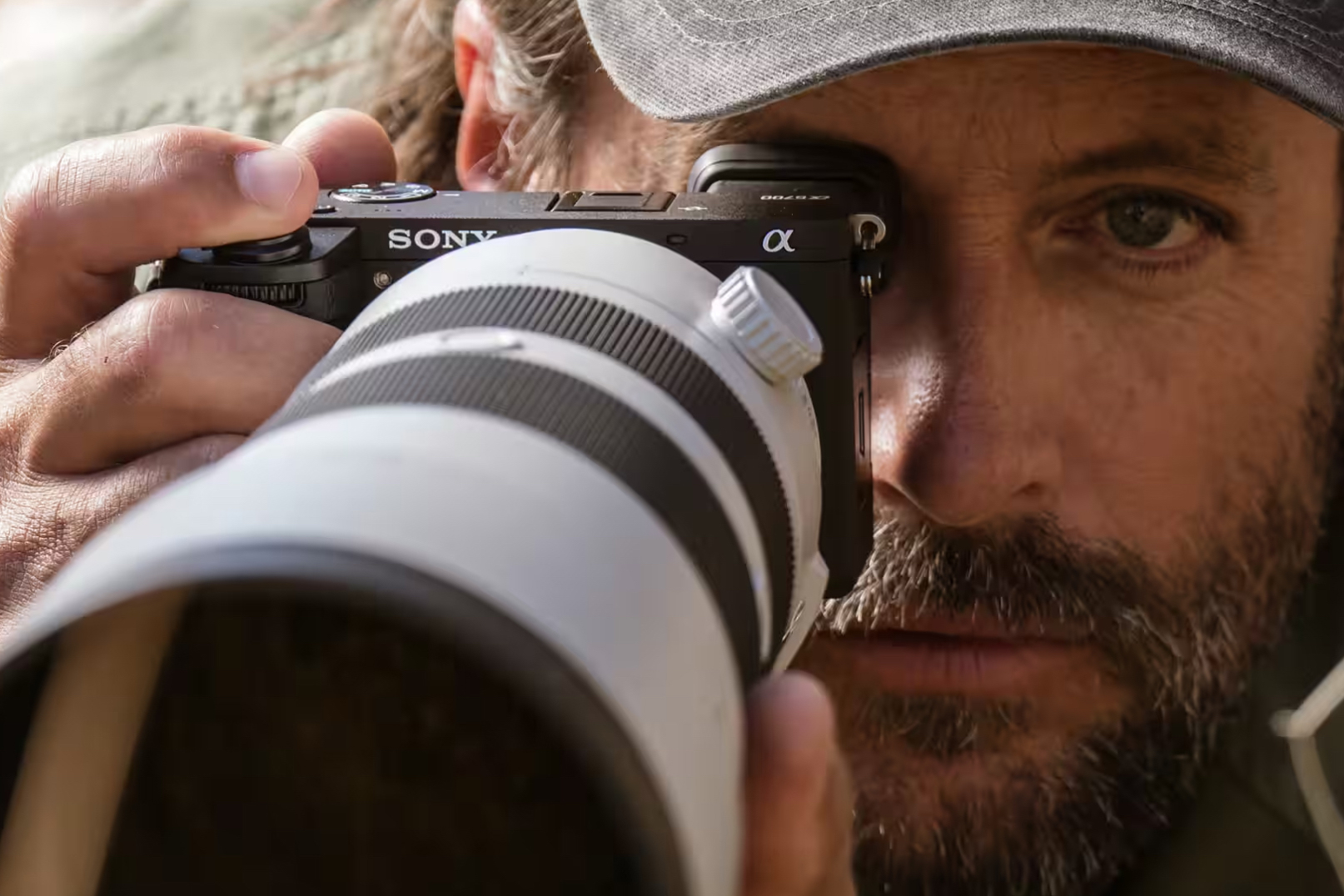
Image: Sony AU
The Sony a6700 utilizes the E-mount lens system, a versatile and widely supported mount by Sony.
This system caters specifically to Sony’s range of mirrorless cameras.
E-mount lenses are diverse, including options like wide-angle, telephoto, prime, and macro lenses.
They cater to various photography styles and needs, from landscape to portrait.
The a6700 is an APS-C camera, so it benefits from lenses designed for APS-C sensors.
These lenses are typically more compact and affordable, optimized for the smaller sensor size.
The camera is also compatible with Sony’s full-frame E-mount lenses.
While larger and often more expensive, these lenses provide exceptional image quality and broader versatility.
Lens adapters are available for photographers wanting to use non-E-mount lenses.
These adapters increase the range of compatible lenses, including older or specialty lenses.
What Kit Lens Comes With the Sony a6700?
The Sony a6700 typically comes bundled with a versatile kit lens, the Sony 16-50mm f/3.5-5.6 OSS.
This lens is widely recognized for its compactness and versatility, making it an excellent starter lens for beginners.
With a focal range from wide-angle to mid-telephoto, this kit lens covers a variety of shooting scenarios.
The lens is particularly suited for everyday photography, including landscapes, portraits, and general travel photography.
Its Optical SteadyShot (OSS) image stabilization is a key feature of this kit lens.
It significantly reduces camera shake, helping you to capture clearer images, especially in low-light conditions.
The lens’s variable aperture of f/3.5-5.6 offers decent performance in various lighting situations.
However, it’s not as wide as some of the more premium lenses, which may limit its low-light capabilities.
You might also find the a6700 bundled with an 18-135mm f3.5-5.6 OSS kit lens, which is a good choice if you want a versatile, all-in-one lens.
It allows you to shoot a wide range of scenarios, from expansive landscapes to detailed portraits or distant subjects, all without the need to switch lenses.
How Do You Change Lenses on the Sony a6700?
Changing lenses on the Sony a6700 is a straightforward process designed for quick and easy operation.
First, ensure your camera is turned off. This helps to protect the sensor from dust during the lens change.
Locate the lens release button on the a6700’s camera body near the lens mount. Press and hold this button to unlock the lens.
While holding the lens release button, gently twist the lens counter-clockwise. It should detach smoothly from the mount.
Take the new lens and align its mounting mark with the camera’s mount indicator. These indicators are typically marked with a red or white dot.
Gently insert the lens into the mount and twist it clockwise. You should hear a click, indicating the lens is securely attached.
Finally, turn on your a6700 and check through the viewfinder or LCD screen to ensure the lens is functioning correctly.





